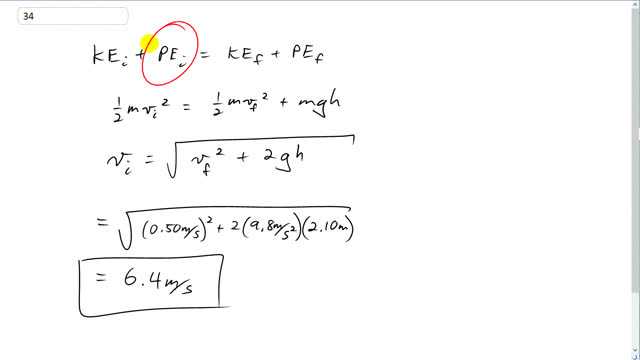
In the high jump, the kinetic energy of an athlete is transformed into gravitational potential energy without the aid of a pole. With what minimum speed must the athlete leave the ground in order to lift his center of mass 2.10 m and cross the bar with a speed of 0.50 m/s?

In order to watch this solution you need to have a subscription.
This is Giancoli Answers with Mr. Dychko. The total energy of the high jumper initially equals the total energy after they are going over the crossbar. And initially, they have zero potential energy because we will take the ground to be the reference level and so they just have some kinetic energy while they are running towards the high jump crossbar. And as they are going over the bar, the high jumper will have some kinetic energy and some potential energy as well. So the initial kinetic energy is one-half mass times initial velocity squared and then they will have kinetic energy of one-half mass times final velocity squared that's the velocity when they are passing over the crossbar. And they will have this potential energy, mgh, where h is the height above the ground. And we can solve for v initial by dividing everything by m and multiplying everything by 2. And we have v initial equals the square root then, after you take the square root of both sides, of the final velocity squared plus 2 times g times h. So that's square root of 0.5 meters per second, and we square that, plus 2 times 9.8 meters per second squared times 2.10 meters which is 6.4 meters per second.